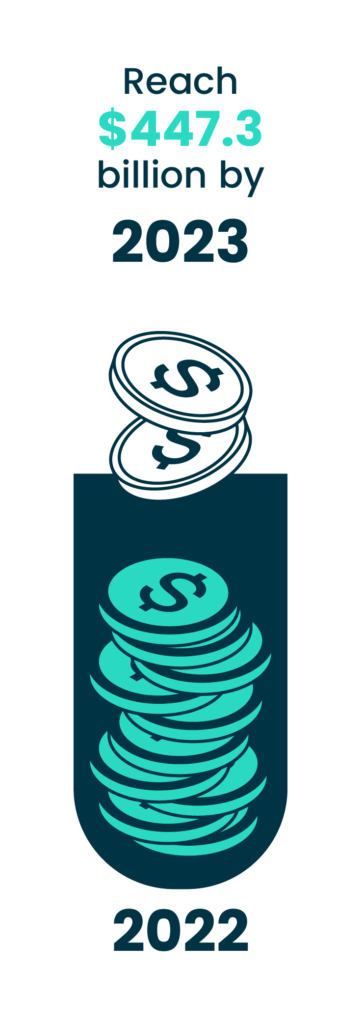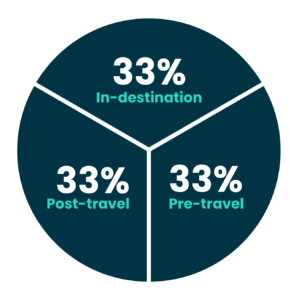Your Ultimate Guide to Personalization in Travel Industry

Over the last few years, personalization as a concept has become a central paradigm across industries. It’s one of those tourism trends that continues to be one of the main topics experts emphasize year after year. But what exactly does it imply?
What is Personalization in Travel?
Personalization in the travel industry refers to the practice of generating promotional content, including marketing messages, recommendations, travel products, accommodations, and itineraries based on an individual basis.
It enables OTAs and travel agents to communicate with potential customers on a more personalized level. Following the best personalization strategies in the travel industry is essential not only because the competition is already doing it but also because it can enable you to establish next-level customer relationships, boost conversion rates, and increase revenue across all your channels.
In fact, almost 90% of travelers choose travel brands that have personalized their recommendations over their counterparts that did not.

If you want to learn more about personalization in the travel industry, below you can find all the crucial facts ranging from types of personalization and how to implement it to real-world case studies and challenges and risks.
II. Overview of Personalization in the Travel Industry
Since the travel industry encompasses the hospitality industry and hotel industry, it’s essential to look at personalization as a concept that can benefit all parties in this vertical. The hotel industry is solely concerned with the provision of guest accommodation and related services. The hospitality industry, on the other hand, is concerned with leisure in a more general sense. Personalization efforts can encompass services from both of these niches.
The best way to completely understand personalization is to learn about its different types. After all, the personalized travel market is bound to reach $447.3 billion in size by 2030.
There are pre-travel, in-destination, and post-travel personalization initiatives. Let’s see what each type is and some of the best practices each one of them deploys.
- Types of personalization in travel
Pre-travel personalization
Pre-travel personalization, as the name suggests, encompasses different practices to reach and deliver messages to target customers in a personalized manner. Its primary purpose is to generate high-quality leads and push them down to the marketing funnel. This type of personalization is the backbone of modern tourism marketing.
Pre-travel personalization can be present across all marketing channels. Some of the most common best lead generation practices include targeted social media ad campaigns, pay-per-click (PPC) search engine campaigns, dynamic emailing, and persona-specific messaging.
In-destination personalization
In-destination personalization refers to practices that enable OTAs and travel agents to offer a custom-tailored stay experience to every traveler. It’s the opposite of the “one size fits all” approach. Instead, it takes into account specific travelers’ preferences to deliver the personalized offer.
It can include anything ranging from personalized room upgrades and additional amenities to personalized itineraries and specific activities at the destination. The goal is to leave a good impression on a client, deliver memorable experiences, and create opportunities for repeat business.
Post-travel personalization
Post-travel personalization completes the “journeys end to end” puzzle. It enables brands to attract 63% of customers who don’t want to book experiences from brands that don’t use or use poor personalization. This type of personalization leverages data that clients generated pre-travel and in-destination.
It enables OTAs and travel agents to maintain relationships with clients, keep them in the loop with offers that are relevant to them, and establish a relationship based on trust and care. Now, all these three types of personalization in the travel sector benefit both travel brands and travelers. Let’s see what these benefits are.
- Benefits of personalization for travelers
While personalization in travel holds many benefits for travelers, three particular ones emerge as noteworthy:
- Helps travelers to make informed choices – the power of personalization can help travelers choose the perfect vacation for themselves. Inputs such as “who are you traveling with?”, “how long do you plan to stay?”, and “how do you prefer to spend your vacations?” can help travelers find a personalized offer that reflects their unique needs and expectations;
- Enables travelers to get prompt customer service – personalization and customer service can go hand in hand. Such is the case with AI-powered personalized chatbots. They are available 24/7/365 and can help travelers get not only personalized offers but also provide prompt service on demand;
- Helps travelers better plan their trips – personalization can also help travelers better plan their trips. A personalized offer doesn’t only include a custom-tailored price for a travel experience. It also includes all the details regarding transportation, stay, and activities. This amount of information helps travelers better plan their trips, feel less anxious, and have quality time.
- Benefits of personalization for travel companies
When it comes to travel companies, they stand to benefit from personalization as well. In the abundance of benefits, the following three emerge as the most noteworthy ones:
- Competitive advantage – whatever the size of your target travel is, the chances are that you are up against at least a few competitors. Personalization can help you get an advantage as you can offer tailor-made travel experiences and completely custom packages;
- Increased sales – when you care for the travelers1 and enable them to make informed decisions and get the most out of their trip, you create a returning customer who will most definitely improve your bottom line;
- Next-level online reputation and word-of-mouth (WOM) marketing – hyper-personalized services are becoming a norm across verticals. Once you start following personalization practices, you will get positive feedback from customers who expect you to offer personalization. Additionally, personalization will help you delight your customers. They will take an interest in your brand and promote it for free in their daily online and offline dialogues.
How Online Travel Agencies (OTAs) and Travel Agents Can Implement Personalization
Now, even if you like the idea of personalization, you might be reluctant to implement it because it can appear overwhelming to you. After all, you might be under the impression that planning, executing, and sustaining it is overly complicated. However, that couldn’t be further from the truth. Below you can discover how OTAs and travel agents can implement personalization.
- Use of Customer Data
Since we live in the digital age, all travelers generate copious amounts of data throughout all the phases of travel. They use specific search terms with search engines, click particular links and images on websites, visit social media profiles, like content, leave comments, and write customer reviews.
Plus, there is also data from your CRM. That’s where you record travelers’ contact details and past interactions with your brand – their purchases, complaints, and resolutions. This data is the foundation of your future personalization efforts. In other words, you can implement personalization thanks to the abundance of customer data.
You can segment travelers by interests, favorite trips, past travels, age, income, etc. Once you have well-defined segments, you can custom-tailor offers for each segment. You can even go into detail and custom-tailor experiences for every traveler individually.
This may all sound tedious, but only if you think you need to use customer data in an old fashion, such as through spreadsheets and lots of copying and pasting.
Fortunately, you can implement personalization on autopilot thanks to technology and tools specifically built to facilitate the use of personalization in travel.
- Technology and Tools for Personalization
Let’s see the technology and tools you’ll have available if you decide to implement personalization in your OTA or as a travel agent.
Artificial Intelligence and Machine Learning
Artificial Intelligence (AI) and Machine Learning (ML)-based solutions can help you do two things. AI-based tools can automate personalization, while ML-based tools can extrapolate vast sets of data, discover patterns and trends, and provide a requested answer. How does this relate to personalization in the travel sector?
AI and ML enable OTAs and travel agents to streamline scheduling procedures, deliver relevant recommendations, and base optimizations on current data. Both personalized chatbots and recommendation engines use AI and ML.
Personalized Chatbots
Chatbots are known for their ability to serve customers relentlessly around the clock. Yes, they can help OTAs and travel agents instantly answer basic questions and automate repetitive tasks such as scheduling and booking.
However, AI-powered chatbots with NLP capabilities can make sense of input text, collect travelers’ information, cross-reference it with your offer database, and offer entirely custom travel packages to travelers. That’s probably the most “hands-free” way to implement personalization with minimal time investment. Other examples of AI use in the travel sector include voice assistants, personal travel planning, and smart baggage handling.
Recommendation Engines
Recommendation engines leverage ML technology to offer customized travel recommendations and personalization. It’s a go-to option for OTAs and travel agents that offer multiple destinations from different tour operators, numerous services within a destination, large travel programs, and a wide range of local services at the destination.
It’s like having an experienced online sales professional available for your travelers around the clock. Recommendation engines like Sabre can learn travelers’ preferences and deliver highly targeted and personalized recommendations in the most useful format.
- Best Practices for Personalization in the Travel Industry
To leverage the above-mentioned tools in an optimal way, you need to know the best practices for personalization in the travel industry. Here are the strategies you should consider implementing:
- Streamline traveler profiling with AI chatbots – AI chatbots can help you seamlessly collect important information about travelers. It will enable you to create travel profiles for every individual that interacts with your AI chatbot and use the data to make personalized recommendations based on their budgets and needs (transportation, hotel, room size, local activities, and so on);
- Run retargeting campaigns – personalized marketing can help you reach quality leads and nurture other leads your campaign generates. You can leverage the data to target people most likely to book and set high bids for them to ensure they click on your ads;
- Personalize text messages – you can use various criteria to personalize text messages for your customers. It can help you deliver an extraordinary experience by sparing your guests from irrelevant messages and delivering relevant information in key places and at perfect times;
- Personalized targeted emails – these emails are perfect for keeping travelers engaged with your offer. The best thing about them is they can drive open and engagement rates through the roof once you start delivering relevant messaging and content;
- Omnichannel presence – not all travelers use the same digital channels. If you truly want to deliver a personalized experience, you must do it consistently and across all digital channels.
Case Studies of Personalization in the Travel Industry
So how does personalization look in action? Below you can find a couple of case studies of personalization in the travel industry.
- Example 1: A successful Fareboom.com implementation of personalization
Fareboom is one of the largest OTAs based in the US. It sources data from airline brands and inventory providers to enable travelers to seamlessly book their transportation. Since the competition in the metasearch engine niche has become harsh, this OTA decided to personalize its platform and its services.
They collaborated with an external team of ML and data science experts to create a custom solution for their needs. The goal was to develop a personalization engine able to track user data and deliver personalized booking suggestions. The company successfully implemented personalization, and the aftermath was astonishing. Fareboom managed to track comprehensive user journeys, optimize marketing, boost customer engagement, and increase revenue.
- Example 2: An AI and ML-based personalization strategy increased sales by 14%
Most personalization technology and tools providers keep their clients’ names confidential. However, they do disclose case studies. To remain competitive and profitable, a reputable travel agency needed a solution to transform customer experience through personalization.
The travel agency in question outsourced the project to a 3rd party company. Creating a data lake pulling data from multiple channels, and providing recommendations based on multiple factors were the two major challenges.
The team created an AI and ML-based personalization solution able to personalize booking services for multiple buyer personas, provide actionable insights, and automatically trigger relevant marketing campaigns to drive more bookings. The result? The travel agency benefited from increased sales by 14%.
Challenges and Risks of Personalization in the Travel Industry
Personalization is just another business process. Since every process is susceptible to certain risks and comes with a few challenges, you should expect personalization to be so too. Here are a couple of things you should pay attention to.
- Privacy Concerns
To personalize your offers, you must consistently track, record, and store customer data. That exposes you to certain cybersecurity risks and raises privacy concerns, so you will have to comply with major data privacy laws and regulations such as GPR and CCPA. Additionally, you need to implement best cybersecurity practices, such as using antivirus, firewalls, and other data protection solutions.
On top of that, you need to create and publish Terms of Privacy on your website and communicate to your customers your data practices.
- Ensuring Consistency in Personalization Across Multiple Channels
Ensuring consistency in personalization across multiple channels is another major challenge you will have to overcome. The best way to approach this is to standardize your personalization efforts across all channels before implementing it.
The level of service you provide has to be consistent. Once you have defined the personalization standards you need to meet, you can develop a strategy. See the strategy through, and you will deliver personalized service across all customer touchpoints and channels.
- Balancing Personalization with Customer Convenience
Keep your customers in mind whenever you adopt or implement something new in your business. It doesn’t necessarily have to improve convenience, but it mustn’t render interaction with your services less convenient. The same applies to personalization.
You should make your personalized offers easy to access and keep the number of steps a customer has to take to book or make a reservation at a minimum.
Conclusion
Personalization has to offer a lot to travel companies. You can use it to drive revenue, boost lead generation, increase conversion rates, and improve your brand’s reputation. Given that it’s one of those trends that transcend one industry, the future outlook for personalization in the travel industry looks promising.
It’s safe to assume that more travel agencies and OTAs will implement it and keep fine-tuning it to achieve more optimal results in the future.
Travel companies interested in implementing personalization should always start by defining their goals and trying to find the answer to the “What do I want to achieve with personalization?” question. Defining goals can help companies look into specific personalization solutions, choose the right one for their business, and future-proof their operations.
Subscribe to
our newsletter
Yay! You are now
subscribed to our
newsletter
Mize is the leading hotel booking optimization solution in the world. With over 170 partners using our fintech products, Mize creates new extra profit for the hotel booking industry using its fully automated proprietary technology and has generated hundreds of millions of dollars in revenue across its suite of products for its partners. Mize was founded in 2016 with its headquarters in Tel Aviv and offices worldwide.
Related Posts
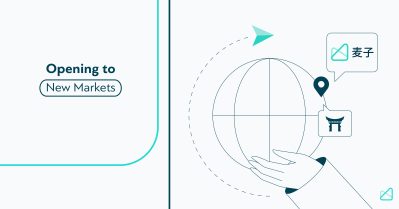
Opening Up to New Markets While Maintaining the Brand
8 min. Case study of adapting the Mize brand for the East Asia market Making a cultural adjustment – finding the balance between global and local The process of growing globally can be very exciting and, at the same time, challenging. Although you are bringing more or less the same products and vision, the way […]
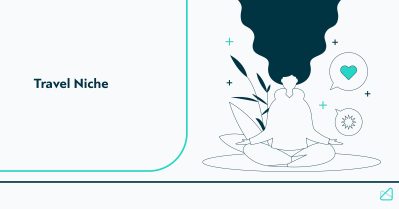
Travel Niche: What It Is, How to Leverage It, Case Studies & More
14 min. Niche travel is one of the few travel sectors that have maintained their pre-COVID market growth. By catering to specific traveler segments, niche travel developed products around adventure travel, eco-tourism, LGBTQ+ travel, and wellness retreats. Take adventure tourism as only one segment of the niche tourism market. In 2021, it reached 288 billion […]
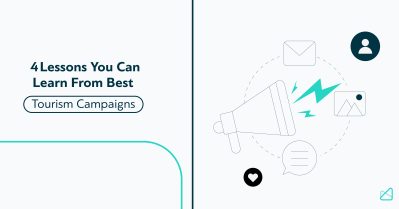
4 Lessons You Can Learn From the Best Tourism Campaigns
13 min. Businesses in the tourism industry rely heavily on marketing to generate leads and boost conversion rates. Tourism marketing is as old as tourism itself – and it always reflects the destination and service benefits relevant to the current travelers’ needs, wants, and expectations. In other words, tourism campaigns must constantly move forward, and […]
